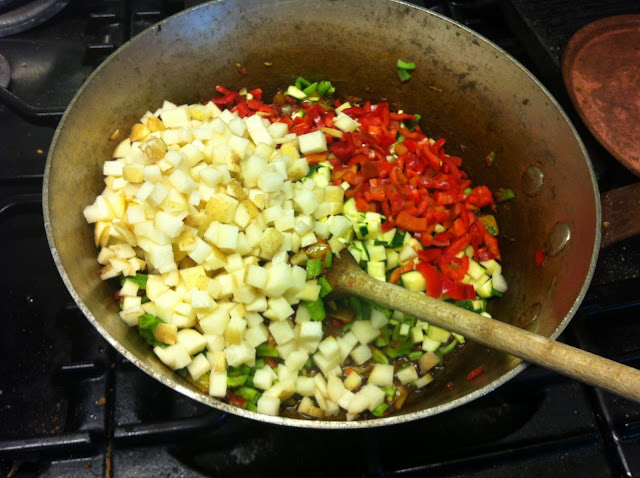Lemon meringue pie is one of the lasting memories from my youth, in those days the meringue was thinner and the filling was often made using a packet of powder which you added egg yolks and water ton and cooked until thickened; the lemon flavour came from a small capsule that resembled a cod liver oil capsule. There were clear instructions to keep stirring the mixture while it gently simmered until the lemon capsule had burst, releasing the essential flavour. The egg whites would then be whisked up with sugar to create the meringue, we felt very modern indeed.
These days making lemon meringue pie utilises the extra eggs I have on my hands from time to time.
You will need:
For the sweet pastry:
70g of unsalted butter, chilled
140g of plain flour
30g of sugar
1 egg yolk
pinch of salt
enough water to form a dough
For the lemon filling:
6 egg yolks and 1 whole egg
200g of sugar
The juice and peeled rind of 6 lemons
150g of butter.
For the meringue:
6 egg whites
150g of sugar
Make the pastry, place the flour, sugar, salt and chilled butter cut up into small pieces into the bowl of a food processor and pulse until the mix resembles small breadcrumbs. Add the egg and pulse again until it has disappeared into the mix, at this point add only as much chilled water as possible to bring the mix together into a firm but pliable dough. If you add more water than necessary at this point the pastry will not have such a tender crisp texture, so add a little, pulse a little and add only as much as you need.
Place the pastry to rest for 15 minutes. I find the fridge too cold for this making rolling out difficult. However, after rolling out the pastry and lining a 20c cake by 4c baking tin, I put the pastry lined tin in the fridge for half and hour to firm up and dry out a little.
Pre heat the oven to 200 degrees C, place a piece of parchment paper onto the pastry, and place ceramic baking beans on top of the paper. If you don't have baking beans, rice that you keep just for this purpose will do well. The aim is to weight down the pastry so that it doesn't rise during the baking process. cut the parchment paper large enough to overlap the tin so that removing the beans is made easier.
Bake the pastry in the oven for 15 minutes, take the tin out and carefully remove the parchment paper and beans and return the pastry to the oven with the heat reduced to 180 degrees for a further 10 minutes. Remove and set to one side.

Make the lemon curd filling, peel the lemons with a potato peeler (you need to avoid any of the white pith at this point) and place in a food processor with the sugar and switch the processor on for 2 minutes to grind the rind up as fine as possible. I find this method extracts the most flovour out of the rind. Place the sugar in a pan along with the juice of the lemons and bring up to a simmer or until the sugar is completely dissolved. If you find the process of grinding up the rind and sugar didn't make the rind fine enough you can sieve the dissolved sugary juice at this point. Allow the mix to cool for a few minutes while you cut up the butter, add the butter and 6 egg yolks to the mix and place back in the pan and on a medium heat, slowly whisk the mix, you will fnd the butter melts at which point it's important to avoid heating the mix too much. The aim is to heat only until the egg yolks thicken the mix, turn the heat down and do it more slowly if you're anxious. Take the thickened lemony curd off the heat and allow to cool for 5 minutes, whisk in the whole egg.
When the baked pastry case has cooled for a few minutes after baking, pour the lemon mixture into the pastry case and return to the oven for 20 minutes at 150 degrees C. remove and alow to cool completely/
Make the meringue, whisk the 6 egg whites until they form soft peaks, add the sugar, I add it all at once, continue whisking for a few minutes until you have firm peaks and the sugar is completely dissolved. Meringues weep when the sugar isn't fully dissolved.
Pile the meringue onto the cooled base and bake at 150 degrees C for 20 to 25 minutes until the top is slightly golden.
Notes:
This recipe may well look like too much work (easy to understand why the packet became available all those years ago) but the effort is certainly worth it, the end result is a delicious sweet and lemony treat, a variety of textures and with the addition of pouring cream, a perfect dessert.
Bonus! the process of making the lemon filling at least up until the point where you add the extra egg, you have actually made lemon curd which can be placed in a sterilised jar and kept in the fridge to use on scones or used to sandwich a sponge cake.
The pastry will shrink a little from the side of the tin but I find it best to leave the finished lemon meringue pie in the baking tin (loose bottomed) until just prior to serving.
You can make the base complete with set lemon filling up to a day before, but add the meringue and bake only on the day it is to be served.




























